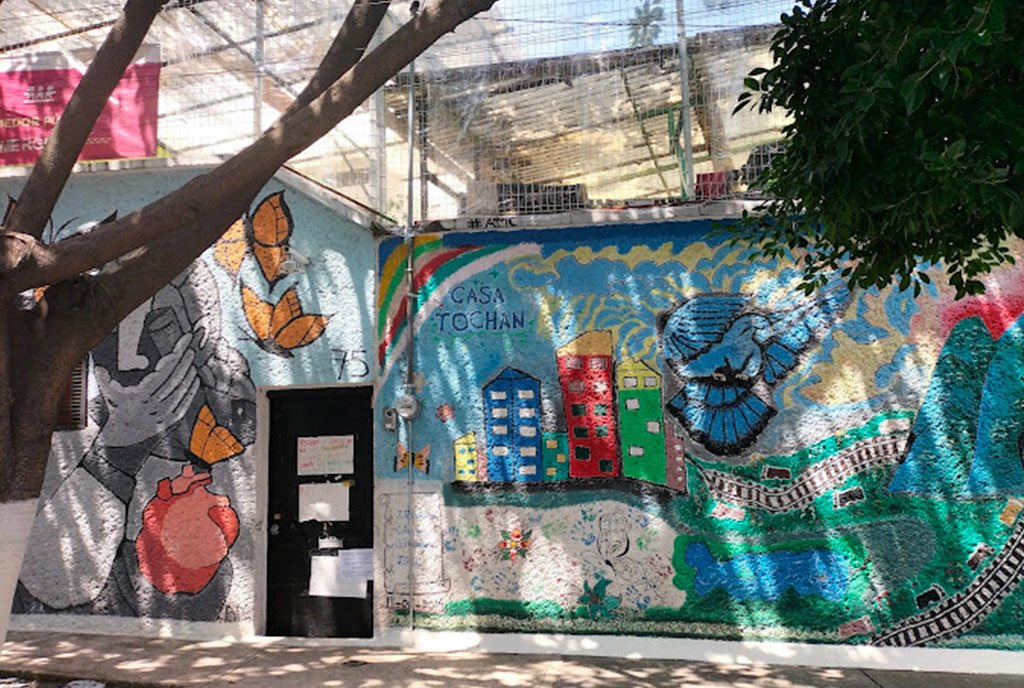
We cannot excel as a nation, as cultures, as a society, and as a world unless we are really able to bring our best, and the science supports that. Belonging allows us to do so.
Cecilia Loving, senior vice president of diversity, equity and inclusion, PBS, interview with the authors
Belonging, justice, and leadership—these ideals fuel the heartbeat of democratic societies, many of which are teetering at the edge. In a decade marked by heightened awareness of systemic inequities nationally and globally, our societies must look disparity squarely in the eye. Leaders of today and tomorrow must confront political polarization, structural racism, and climate injustice. To do so effectively, they must center belonging and justice in their leadership.
Our endorsement of belonging and justice is not wrapped in a diversity, equity, and inclusion comfort blanket argument that says work must feel good. While a collaborative, inclusive, and equitable approach to leadership enhances the work experience, embedding belonging and justice into daily practice creates opportunities for better outcomes. This is vital for missions where the stakes are high—such as the difference between hungry and fed, sick and healthy, life and death. In these matters, trusting relationships and aligned processes are everything.
Leadership and Belonging
Belonging extends beyond inclusion. In an organization, belonging means having confidence in a shared vision.
In our Harvard Extension School course, Nonprofit Leadership and Community Engagement, we do not prescribe a singular definition for leadership. Instead, students review leadership models and write their own definitions based on their learning and personal journeys. Leadership is best understood when we remember it is neither one-dimensional nor solely hierarchical.
Leadership can be thought of as a noun and a verb. As a noun, it represents a title—a role, a responsibility, such as director. As a verb, it embodies action—the methods and movements made carrying out the responsibility. Leadership is practice and application, influenced by countless variables. Therefore, leadership is a who, a how, and a what—the practitioner, the practice, and the result.
Belonging, stripped of deeper consideration, might be explained as “feeling welcome” or “fitting in.” But belonging is beyond comfort or acceptance. Like leadership, it has multiple dimensions. In her book On Belonging, Canadian activist and educator Kim Samuel posits there are four defining elements of belonging: people, place, power, and purpose. Belonging is who we are, where we are, how we are served by others, and how we serve others.
Thought leader john a. powell suggests that belonging is more than just being seen. He writes, “In a legitimate democracy, belonging means that your well-being is considered and your ability to design and give meaning to its structures and institutions is realized.” Belonging extends beyond inclusion. In an organization, belonging means having confidence in a shared vision; it reinforces the mission’s purpose and affirms each person’s role.
Monique Miles, a vice president at the Aspen Institute and managing director of the Aspen Forum for Community Solutions, cites powell as one of her influences. As she has said to us, “Belonging is about agency. It’s about a shared vision of transformation. We’re not setting the table and inviting people. We’re co-creating the table.”
A 2019 Harvard Business Review article, “The Value of Belonging at Work,” states that when people have a strong sense of belonging, their job performance rises, the turnover risk drops in half, and there’s a 75 percent reduction in sick days. Humans are social creatures; connection and belonging are fundamental needs. Cultivating belonging in workplaces is an essential leadership competency.
Leadership and Justice
Defining justice in the context of organizational leadership involves upholding an organization’s moral center. Leaders embody the organizational relationship to honesty, truth, and virtue. Justice is active alignment with core values—the authentic practice of our espoused values. It is the thread and needle that fastens what we say and what we do.
“It’s a lot more than fairness and even more than equity,” Miles contends. “It is this idea of how we are holding space, what spaciousness looks like for people to be able to live their best lives, to have thriving livelihoods.”
Culture change is invisible, but the more we can make the implicit explicit, the easier it will be to sustain.
In the realm of science, proving a negative is deemed intellectually impossible. And yet, both belonging and justice are often best defined by their absence rather than their presence. We know when we don’t belong. We know when we see or experience injustice. The scientific proof exists in how our bodies respond: eyes squint, breath shallows, fists clench, the pit in our stomach deepens.
Sign up for our free newsletters
Subscribe to NPQ's newsletters to have our top stories delivered directly to your inbox.
By signing up, you agree to our privacy policy and terms of use, and to receive messages from NPQ and our partners.
These physical reactions prove that these notions are embedded in us. Those from a certain era might recall lyrics from a segment on the iconic PBS television show, Sesame Street: “One of these things is not like the other. One of these things just doesn’t belong.” Even as young humans trying to understand the world, we recognize the benefit of belonging and the consequences of not belonging.
PBS, as a global influencer, understands the power of belonging and justice. Cecilia Loving, who directs its DEI work, believes that an organizational commitment to cultivating belonging and justice directly correlates with employee engagement, retention, business performance, and success. “We’re really blessed here,” Loving tells us. “Our CEO, Paula Kerger, makes it clear that this work is not the responsibility of one person or one office, but that it is everyone’s responsibility.”
Zooming out, it’s important to acknowledge that long before Sesame Street, the desire to belong was fundamental to US history. The need for belonging has long been central in the fight for civil rights and justice. Over time, the way to go about leadership based in belonging and justice has evolved.
For Miles, rooting justice and belonging deeply as foundational organizational values “is how we move from transactional to transformative.”
People remember how we make them feel more than what we do or say.
Now What? Seven Strategies
Every individual and every organization is on their own leadership journey. Centering values is critical to culture change. Culture change is invisible, but the more we can make the implicit explicit, the easier it will be to sustain. Easier—but not easy.
We asked Loving about the many challenges involved in this kind of change. “The thing about [centering] justice and belonging is that none of this happens overnight,” she notes. “It takes five years to accomplish most things.”
PBS uses acronyms like BEST as inspirational and practical ways to implement change:
- Basic: Doing the foundational tasks that must be done.
- Essential: Responding immediately to what is happening around you.
- Systemic: Integrating all your practices into the work environment.
- Transformational: Carrying out actions needed to bring about lasting change.
In our course at Harvard Extension School, we build on this to encourage leaders to think UP and OVER.
- UP: A combination of urgency and patience.
- OVER: A combination of openness, the preparedness gifted through vigilance, the understanding afforded through empathy, and the grounding anchored through righteousness.
Other practices organizational leaders can adopt to center belonging and justice include the following:
- Know Thyself: If you want staff to do what Miles calls “freedom dreaming,” they must know what roots you. Share the three to four core values that ground and inspire you. Reflect on your social identities (race, class, gender, and so on) and how they shape your perspective. For example, consider how being a northern European immigrant 10 generations ago differs from a first-generation immigrant today. How we perceive our social location shapes our ability to weave belonging and justice into organizational principles and practices.
- Consciously Change Chemistry: In her Harvard Business Review article, “The Most Important Leadership Competencies, According to Leaders Around the World,” Sunnie Giles cites fostering connection and belonging as one of the top five leadership competencies. As sensing beings, we experience social exclusion in the same part of the brain that processes physical pain. Organizational leaders must model this knowledge at the cellular, interpersonal, and cultural levels.
- Become a Purpose-Driven Leader: Reflect on how your socialization shapes your leadership. This means interrogating past experiences with family, schools, friends, and coworkers. Leaders must know and share with others their leadership purpose. The people you influence need to know why belonging and justice matters to you.
- Co-Create Definitions of Belonging and Justice: Spend time with yourself first and then with your team defining these ideas. Miles shared her favorite way to describe justice, paraphrasing philosopher Cornell West: “Justice is what love looks like in action.” Weaving your definitions into your leadership practices and your organization’s culture.
- Deepen Dialogue Practices: Judith E. Glaser writes in Conversational Intelligence: How Great Leaders Build Trust and Get Extraordinary Results, “To get to our next level of greatness depends on the level of culture which depends on the quality of relationships which depends on the quality of conversations.” Loving discusses how PBS deepens dialogue among its employees by training 70 employees in their Restorative Circle Keepers Model. This model fosters the free expression of ideas, elevating feelings of belonging.In our graduate class, we are inspired by the Center for Courage and Renewal’s Touchstones framework. People remember how we make them feel more than what we do or say. Creating the conditions for brave and safe dialogue requires intention and attention, which is why we share habits we want to practice together at the beginning of meetings, trainings, and retreats.
- Examine Patterns of Power: Leaders who work to transform injustice and inequality analyze patterns of power, marginalization, and oppression between and within groups. To become a leader centering justice and belonging, study the power dynamics. Which groups and individuals are marginalized, historically and currently? This must inform your leadership as a noun and verb.
- Measure Belonging and Justice: As Samuel said, “What we measure reflects what we value.” How does an organizational director know if workers feel they belong or believe organizational leadership is rooted in justice? Conduct audits and surveys. Here’s a sample set of questions.Another way to track belonging and justice is through policy decisions that reflect core values and capture what McNeely, coauthor of this article, has called “micro-moments” that colleagues share with you to describe what belonging looks like. Record and tell these stories when interviewing candidates, onboarding employees, and sharing results of organizational belonging and justice audits. Narrative examples are as powerful as quantitative data.
Forging a Path to Belonging
In our final interview exchange with Miles, we asked if she had any wisdom for aspiring leaders. Her answer: “Expand the moral imagination for what’s possible for who we are as humans.”
The present moment is fraught: voices are being muted, rights are being taken, and lives are being lost. Change is necessary. Centering belonging and justice is the way, challenging as it may be. And change can be slow.
As the fight for democracy heats up across the globe, nonprofits need leaders rooted in belonging and justice more than ever. Let us manifest a new generation of leaders who put belonging and justice front and center—and push forward what Miles aptly describes as the “moral imagination” of leadership.












